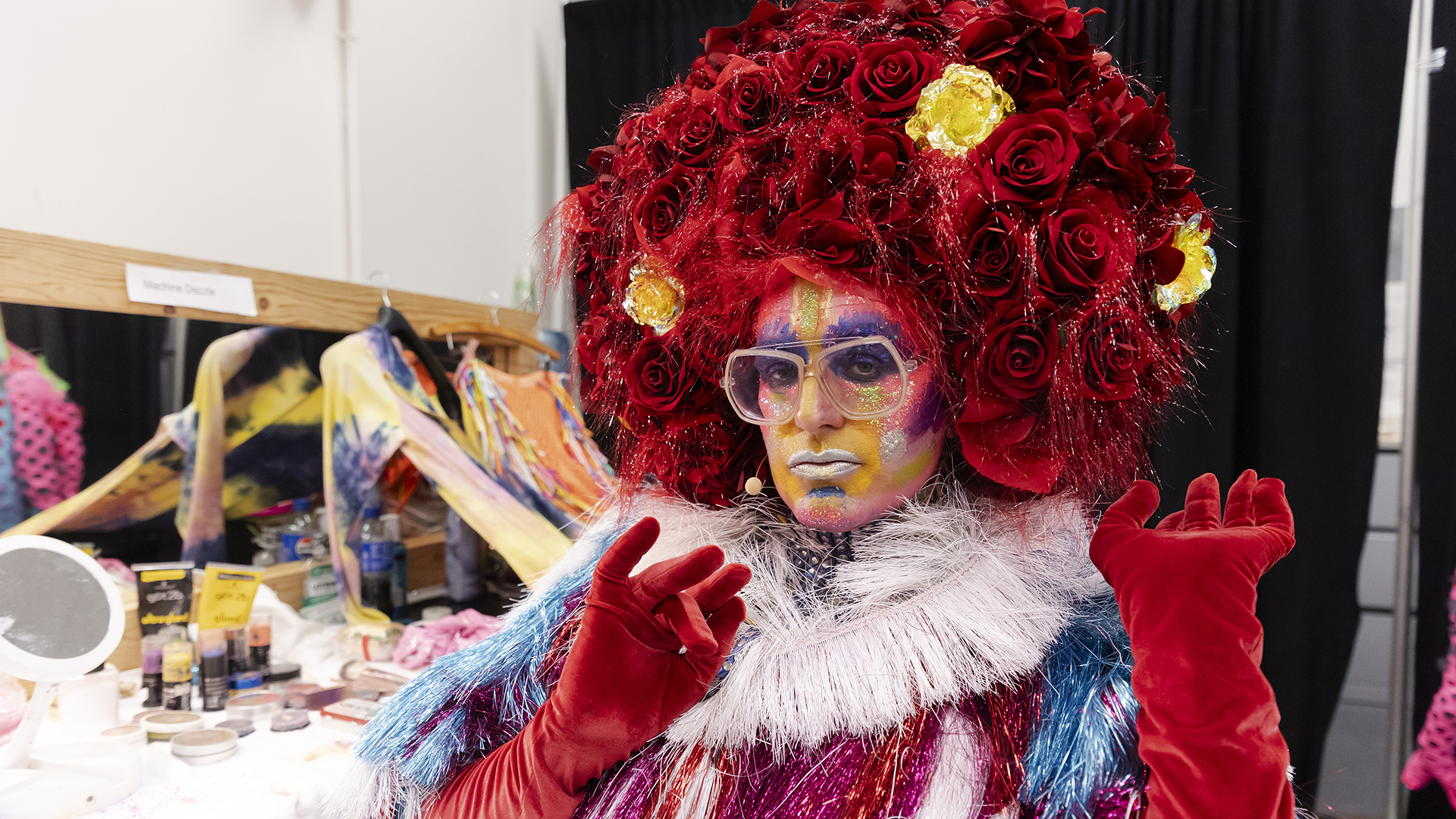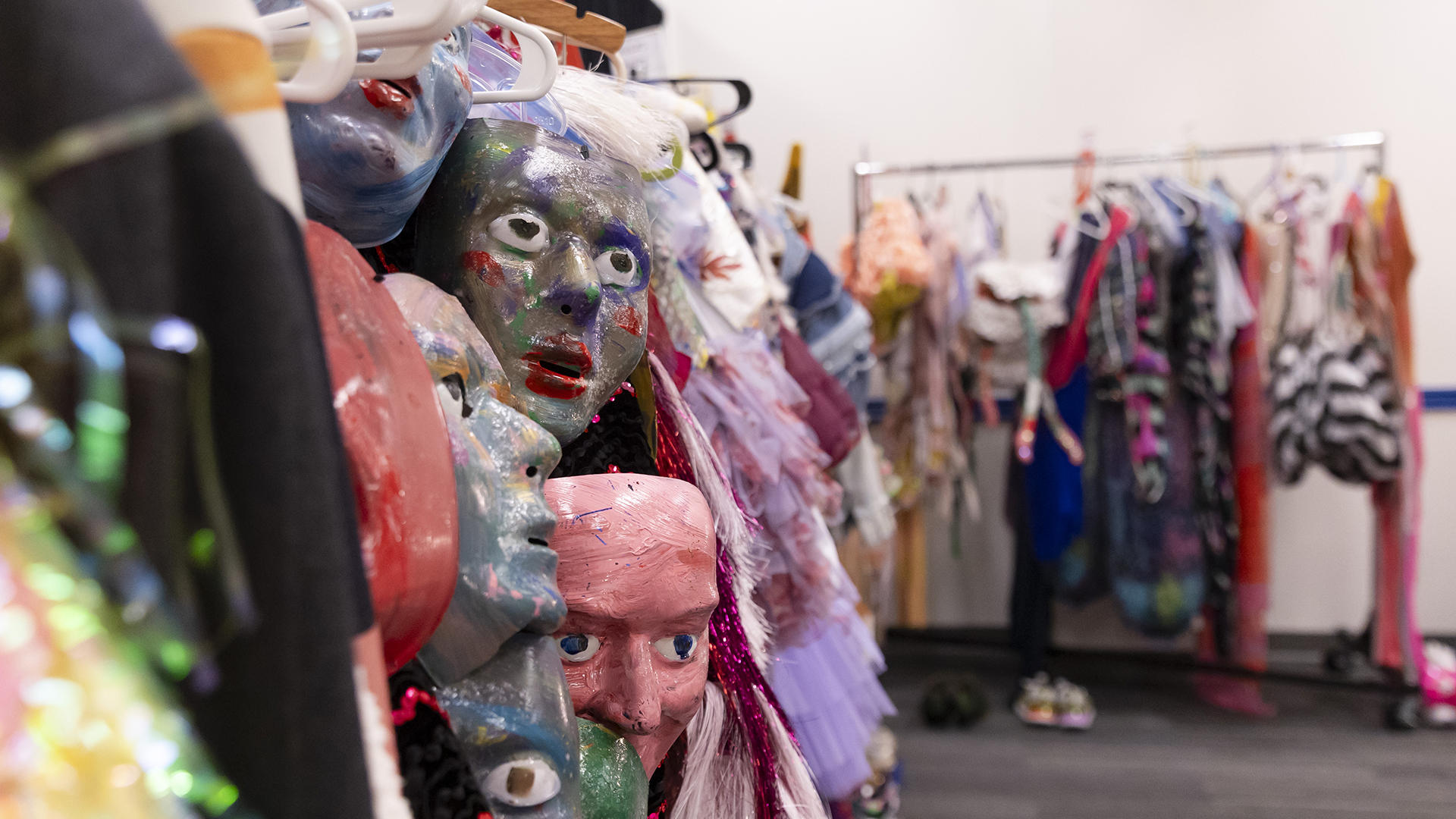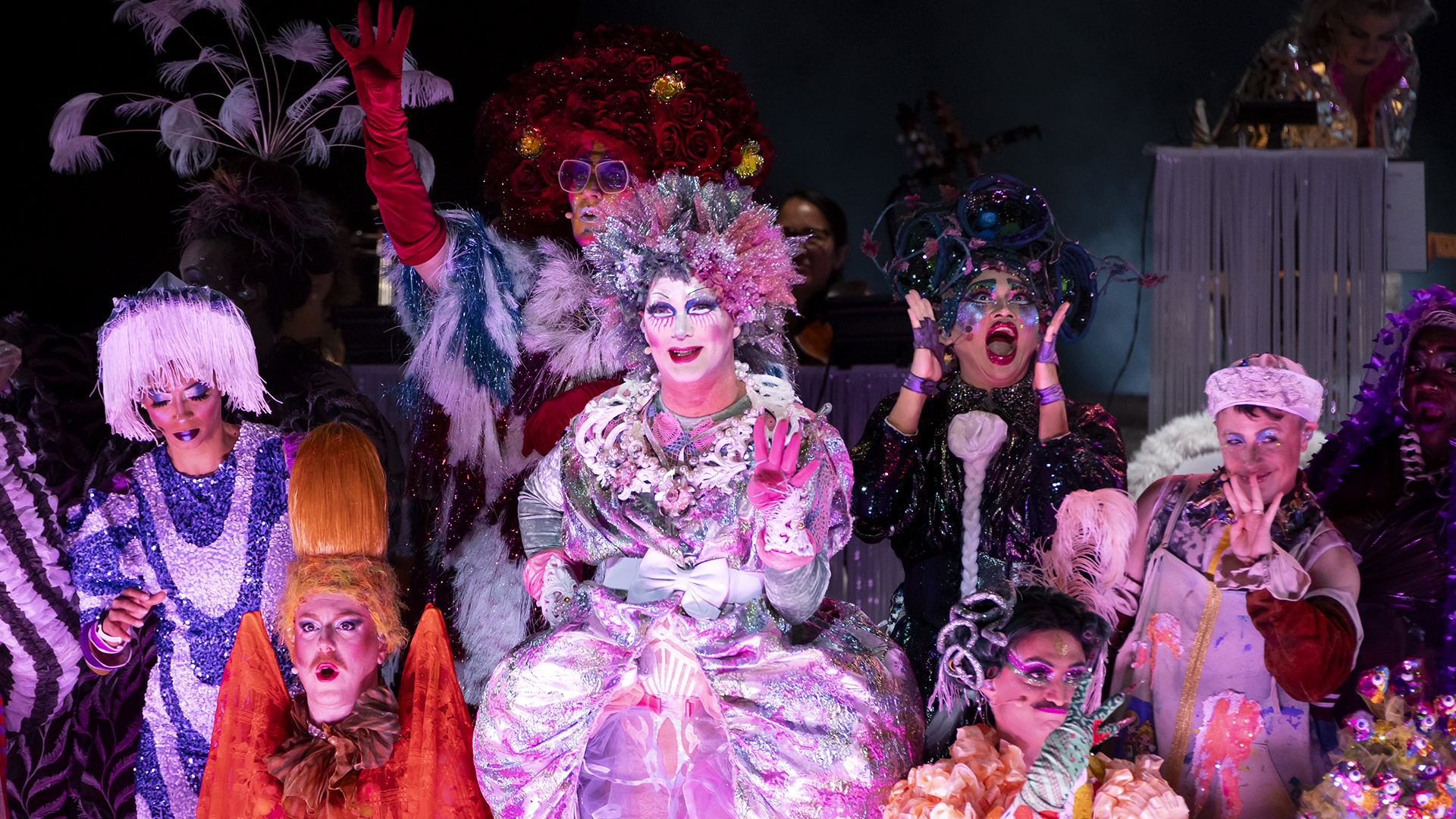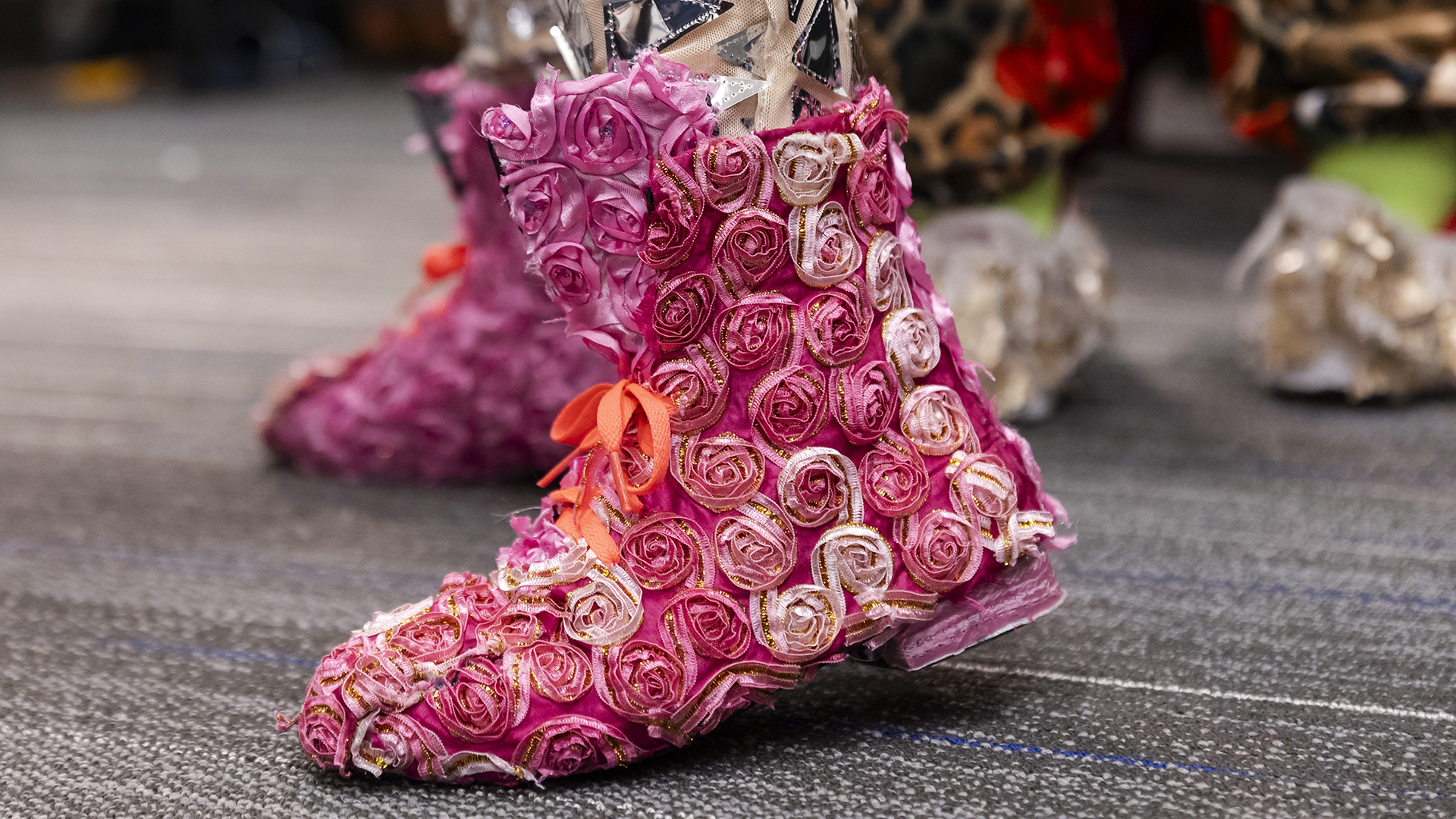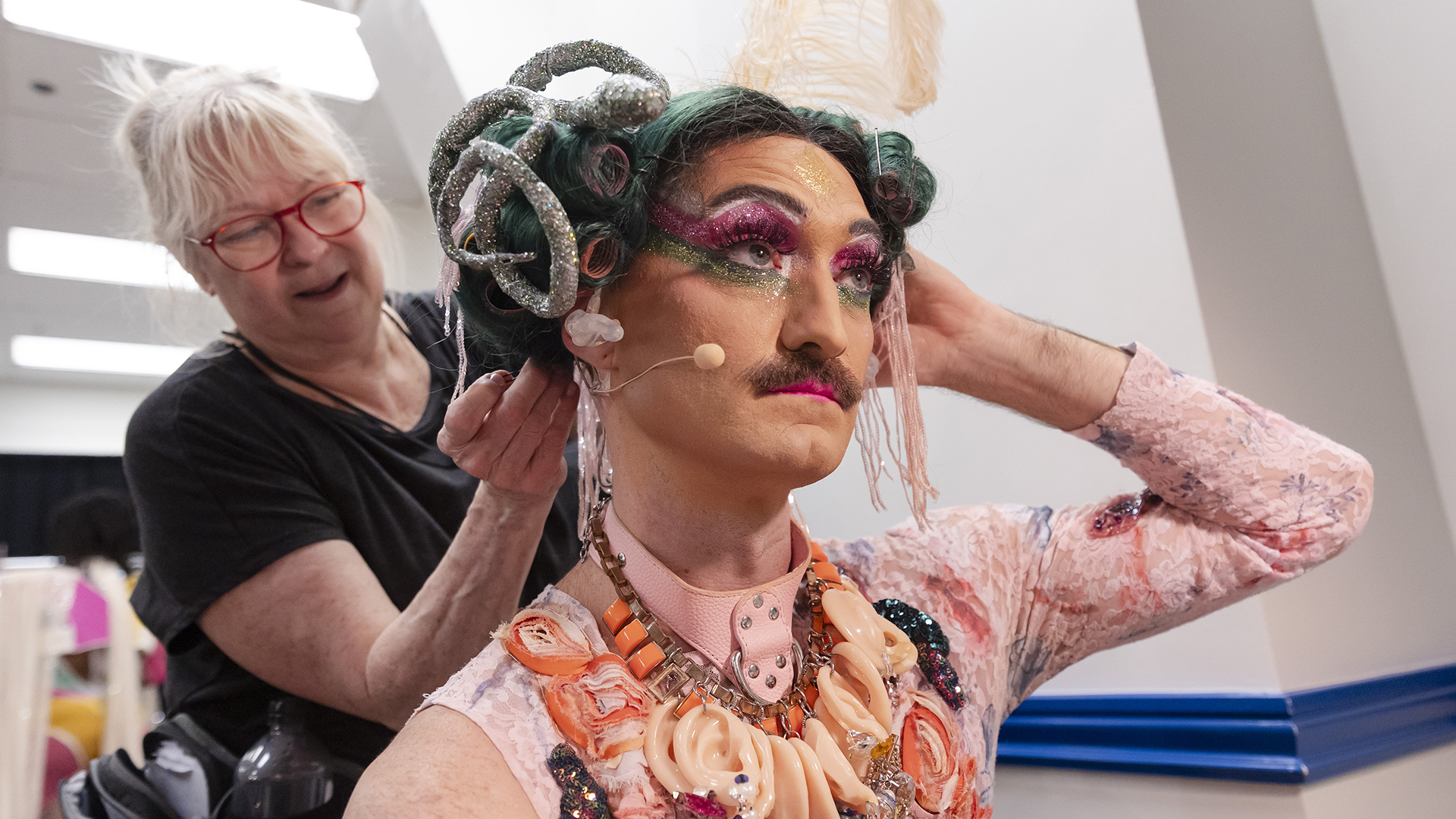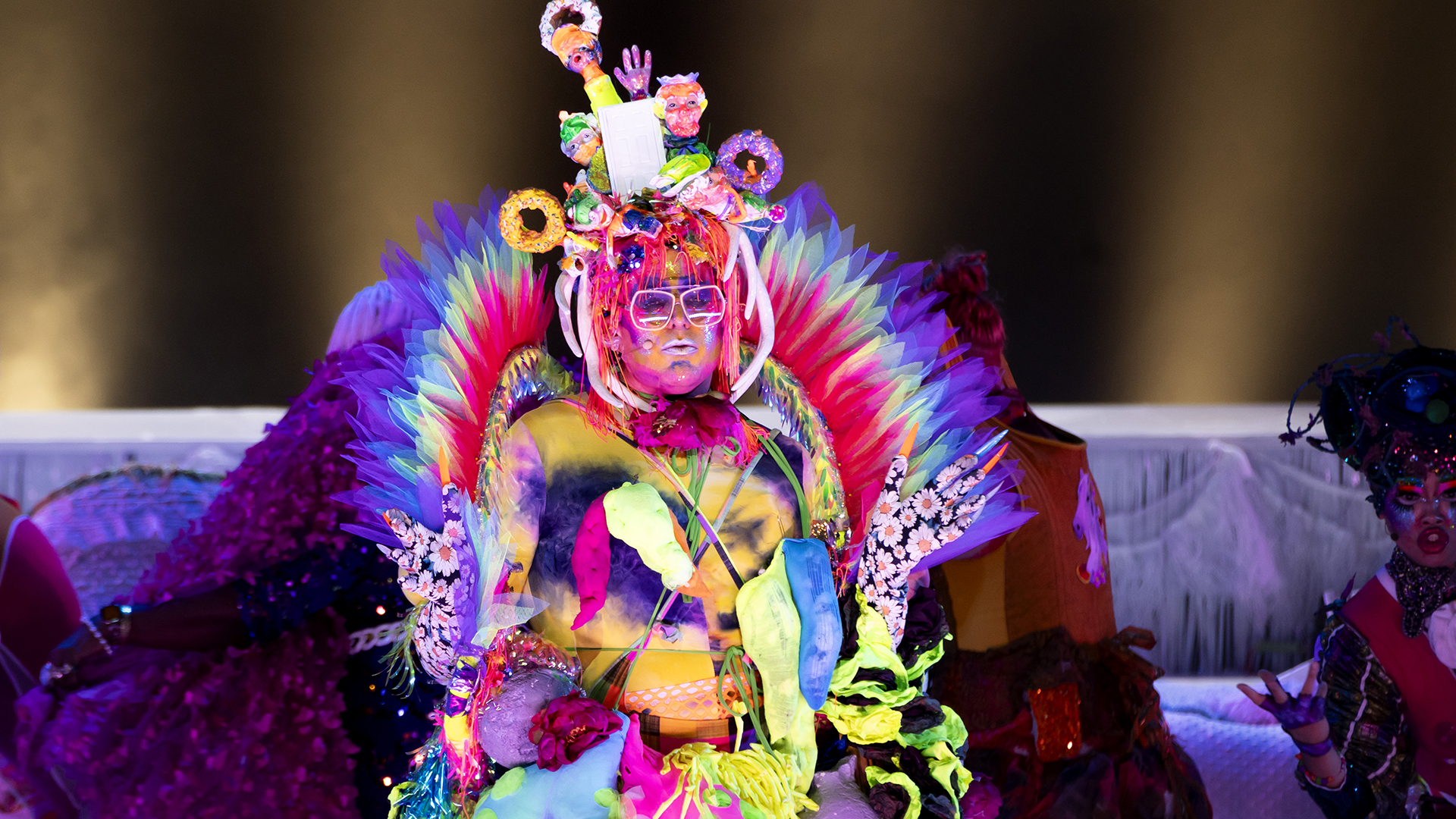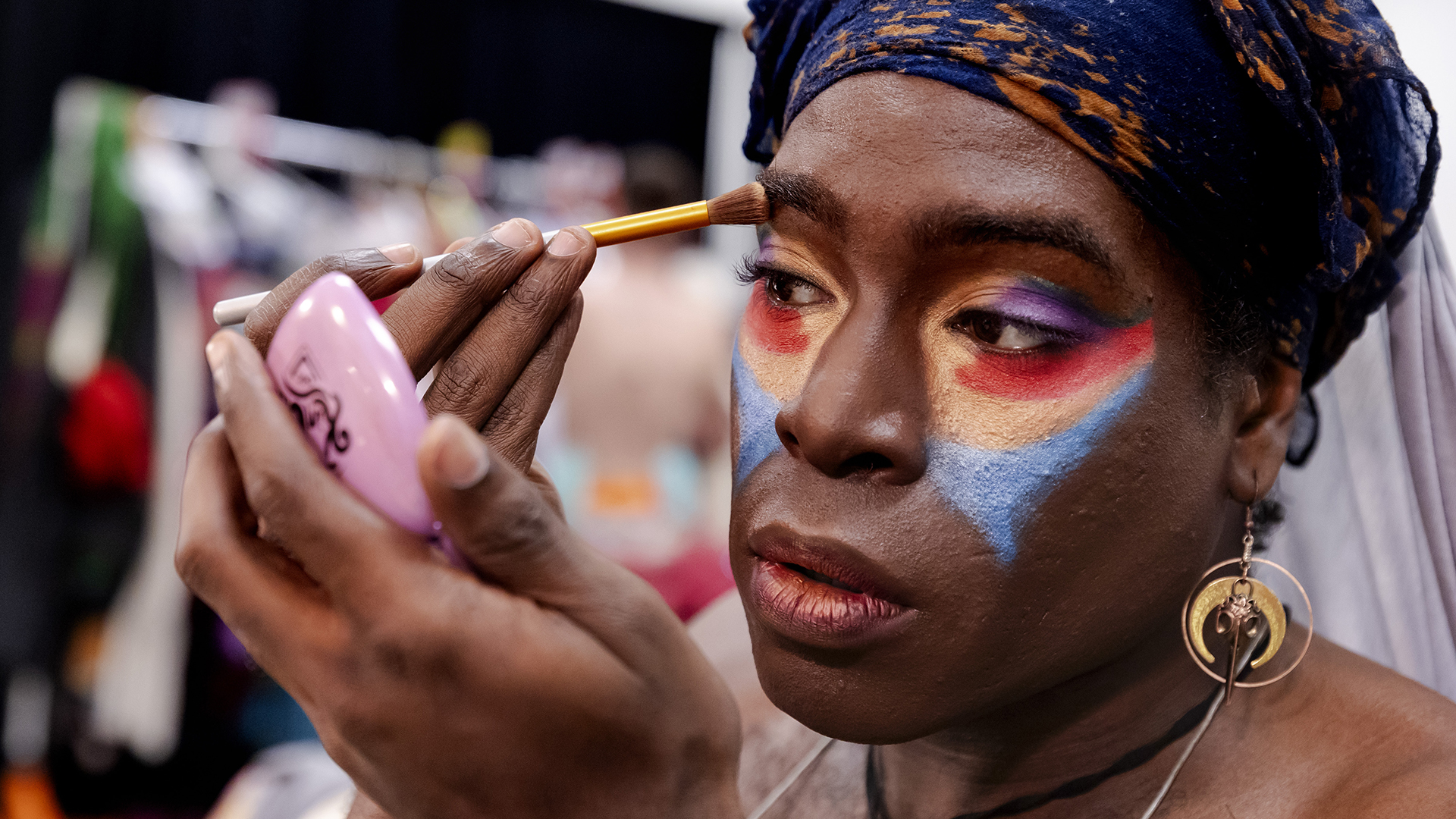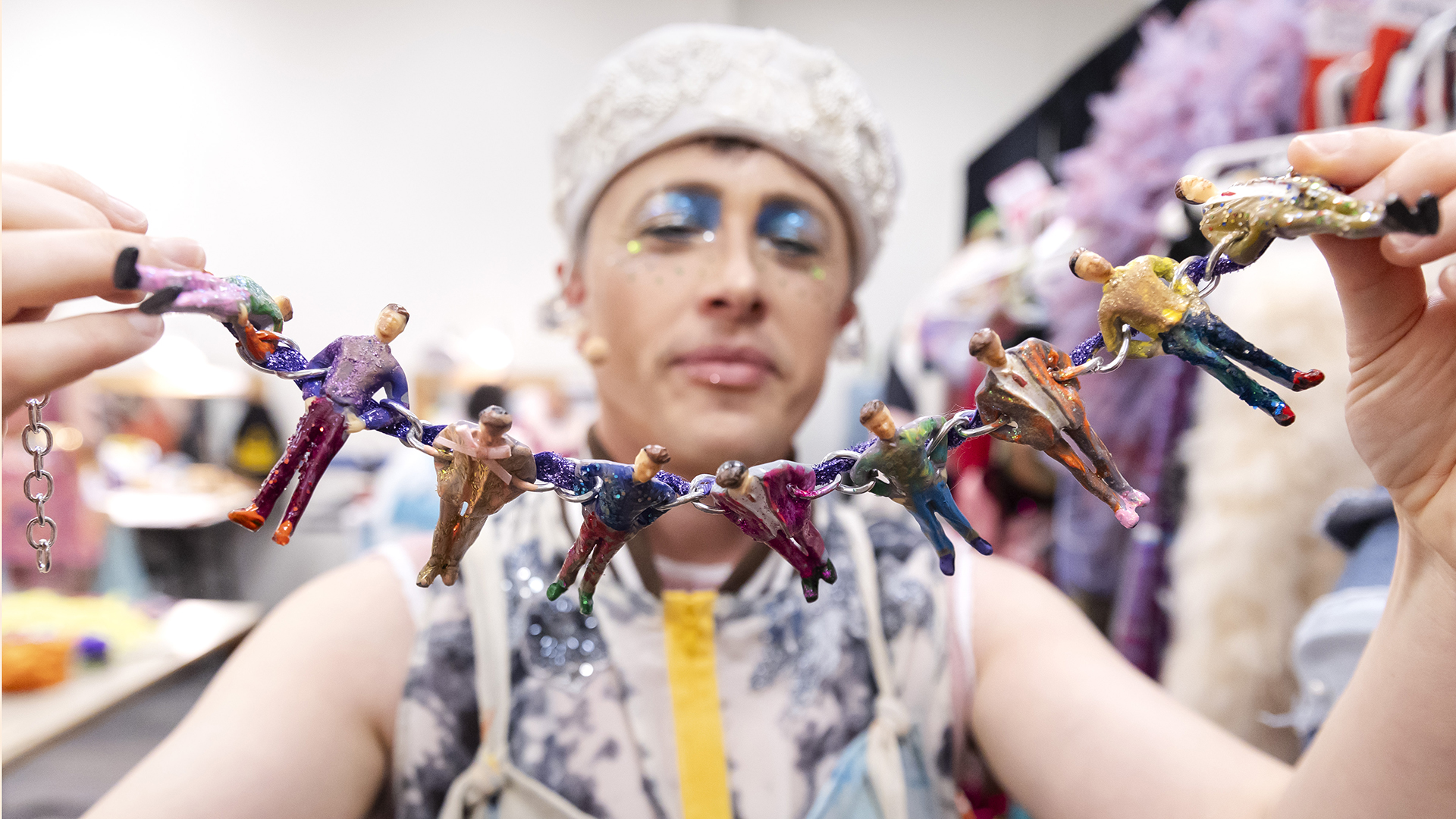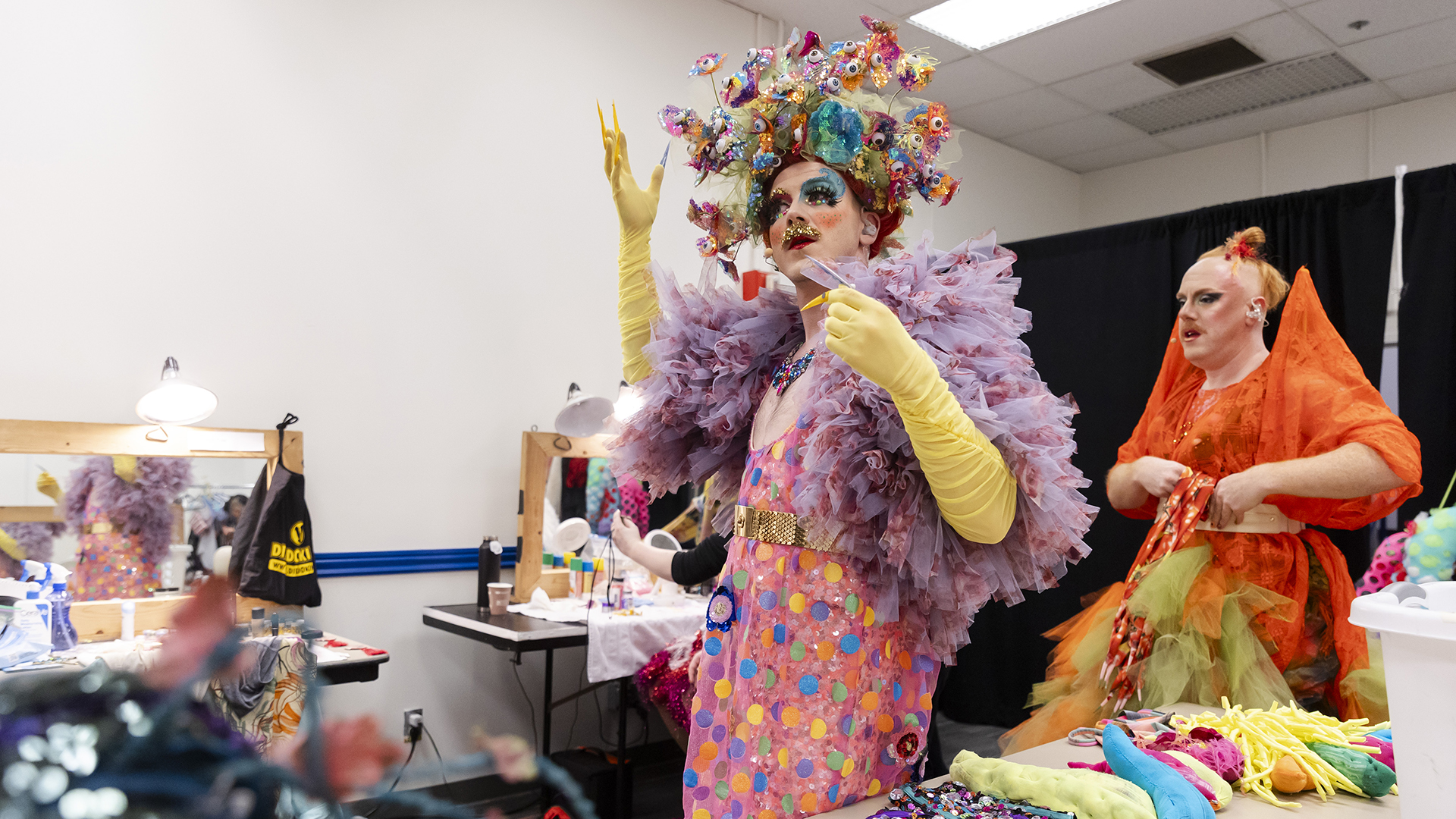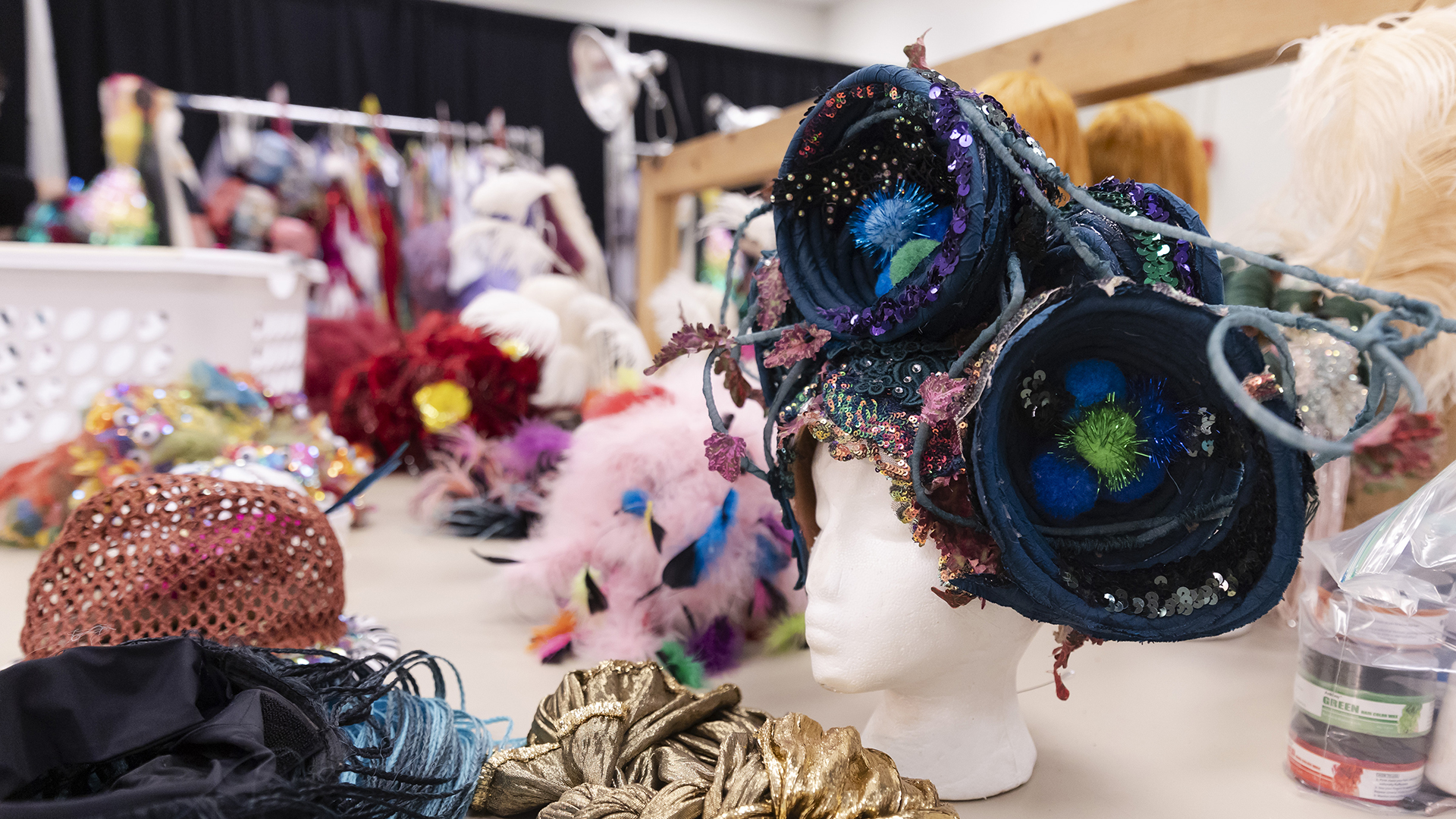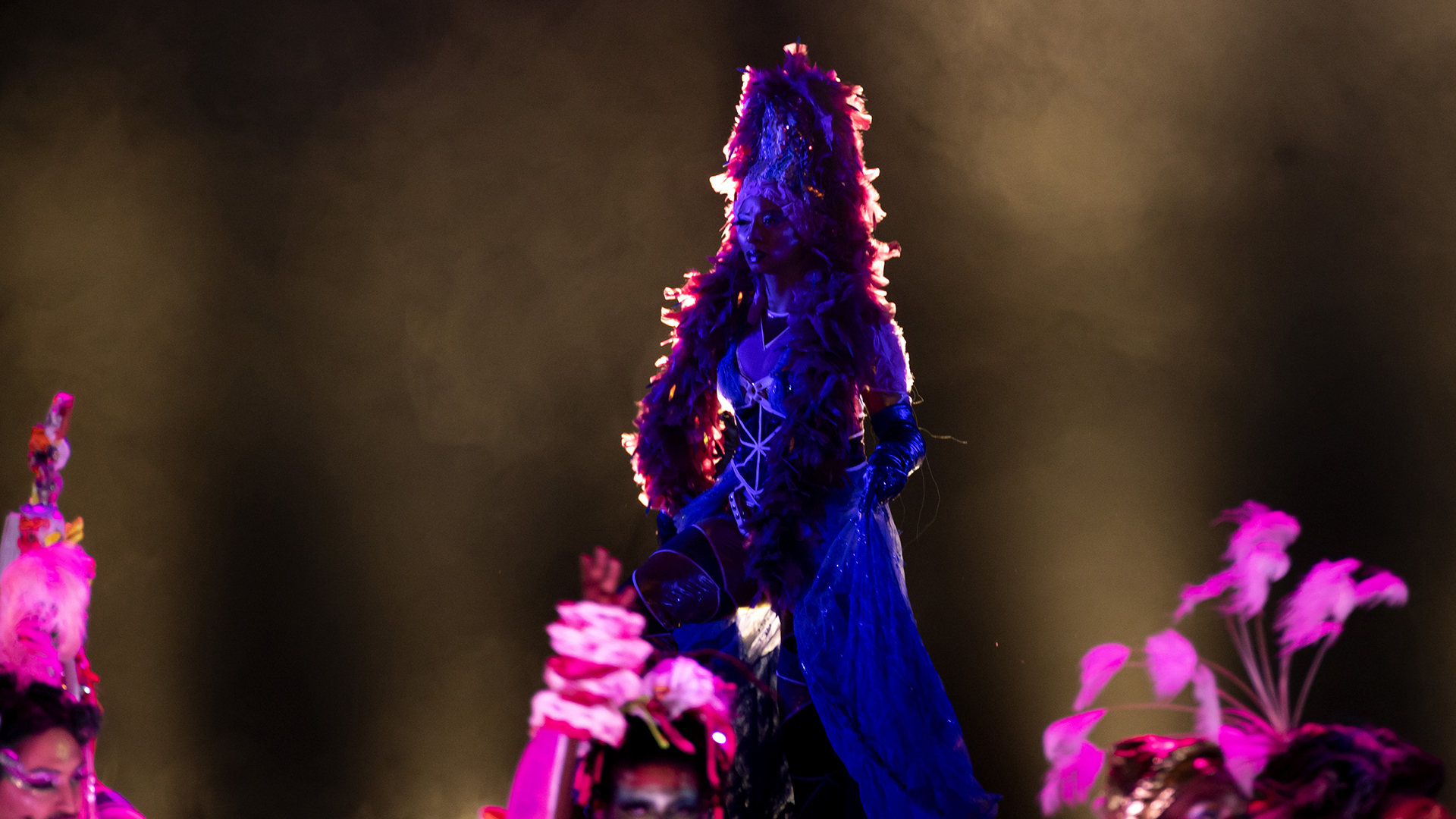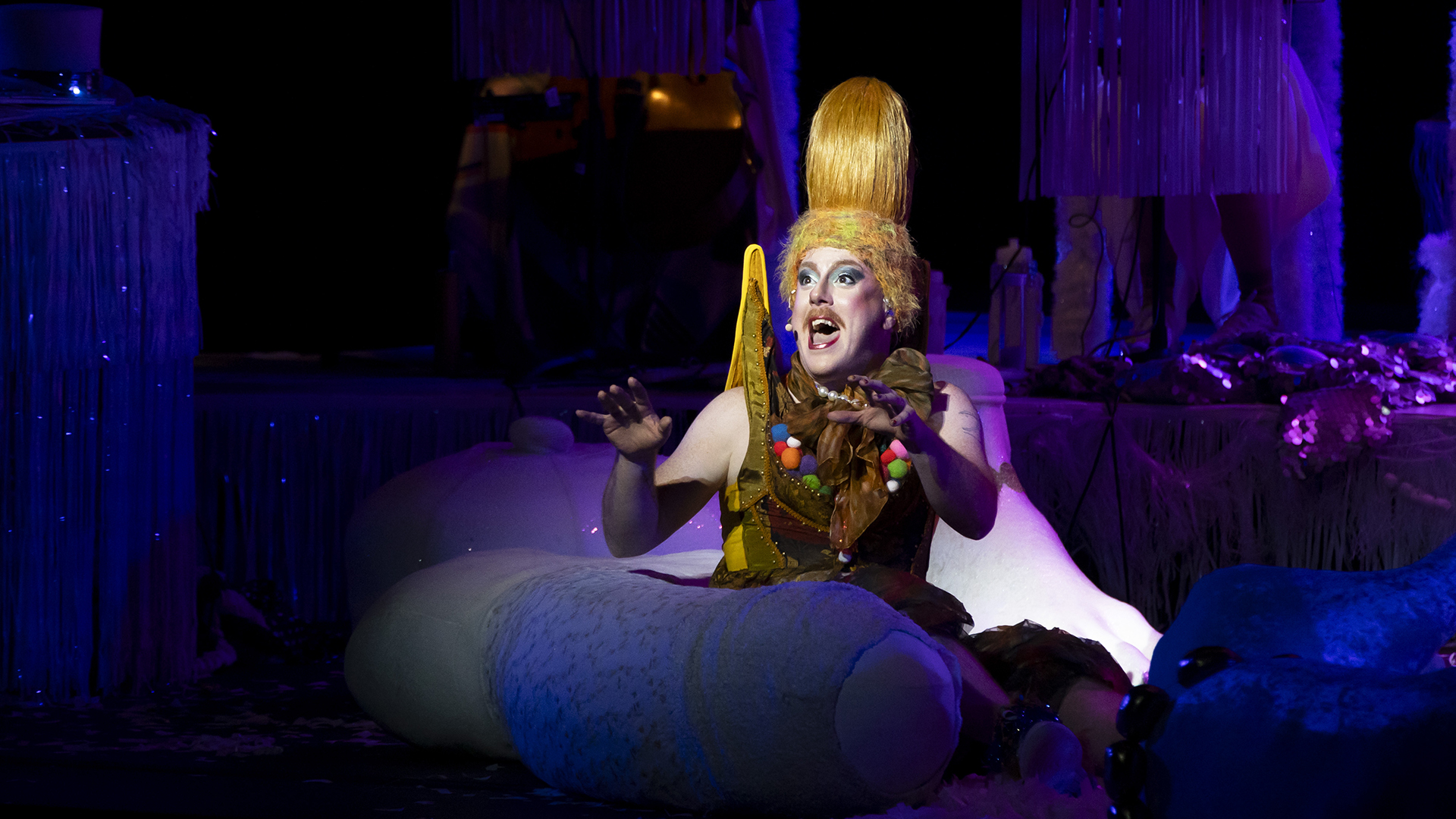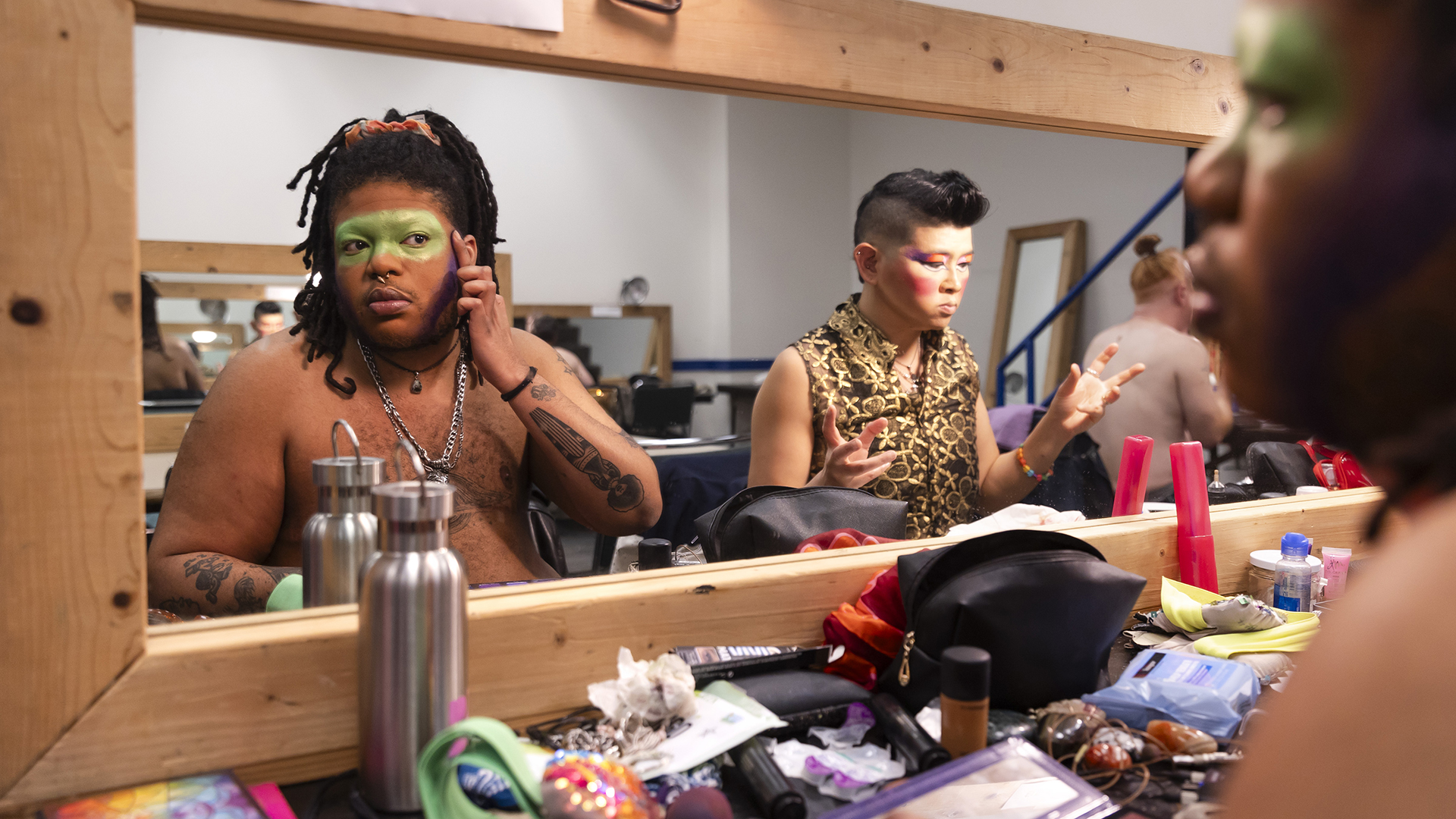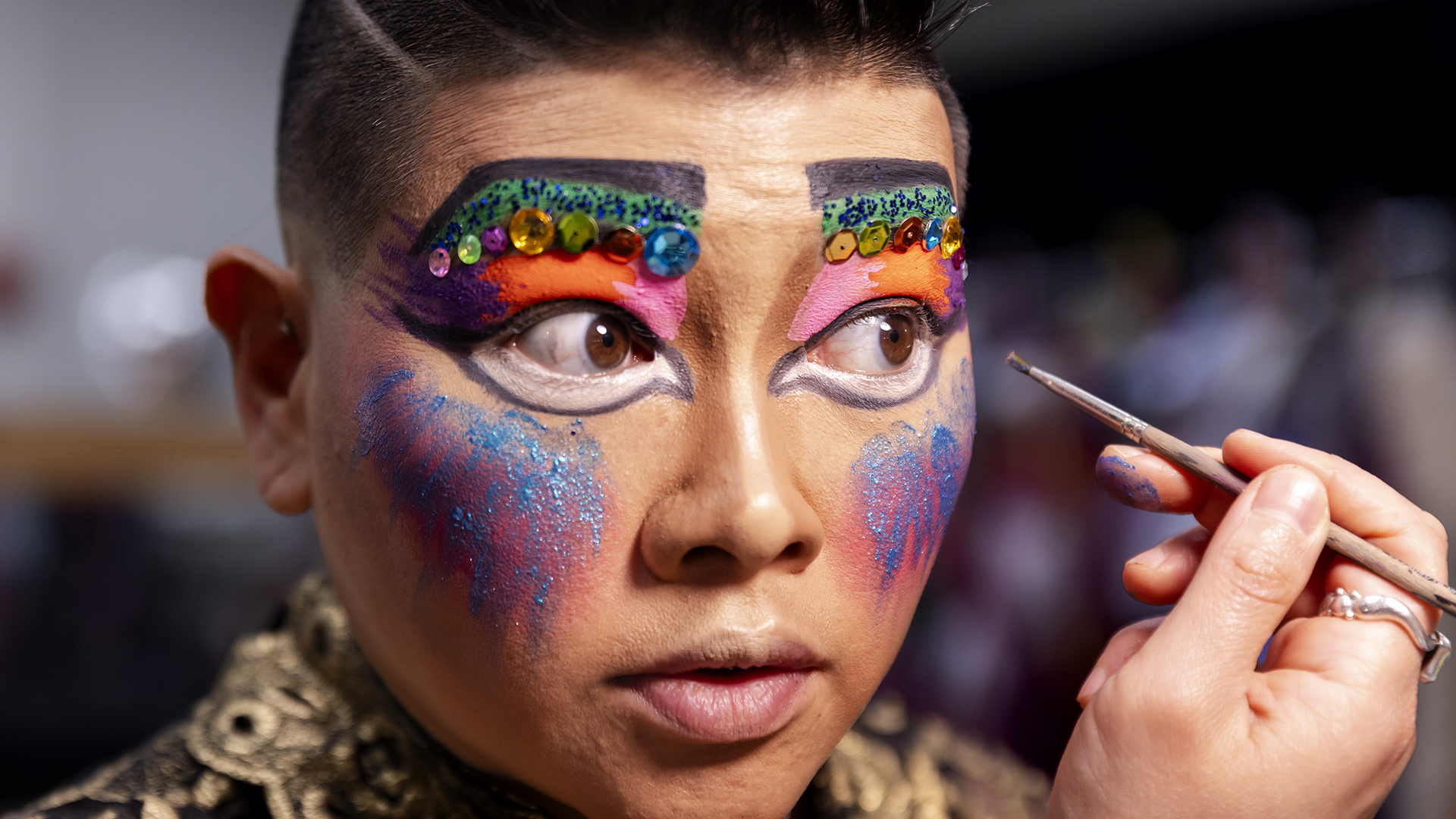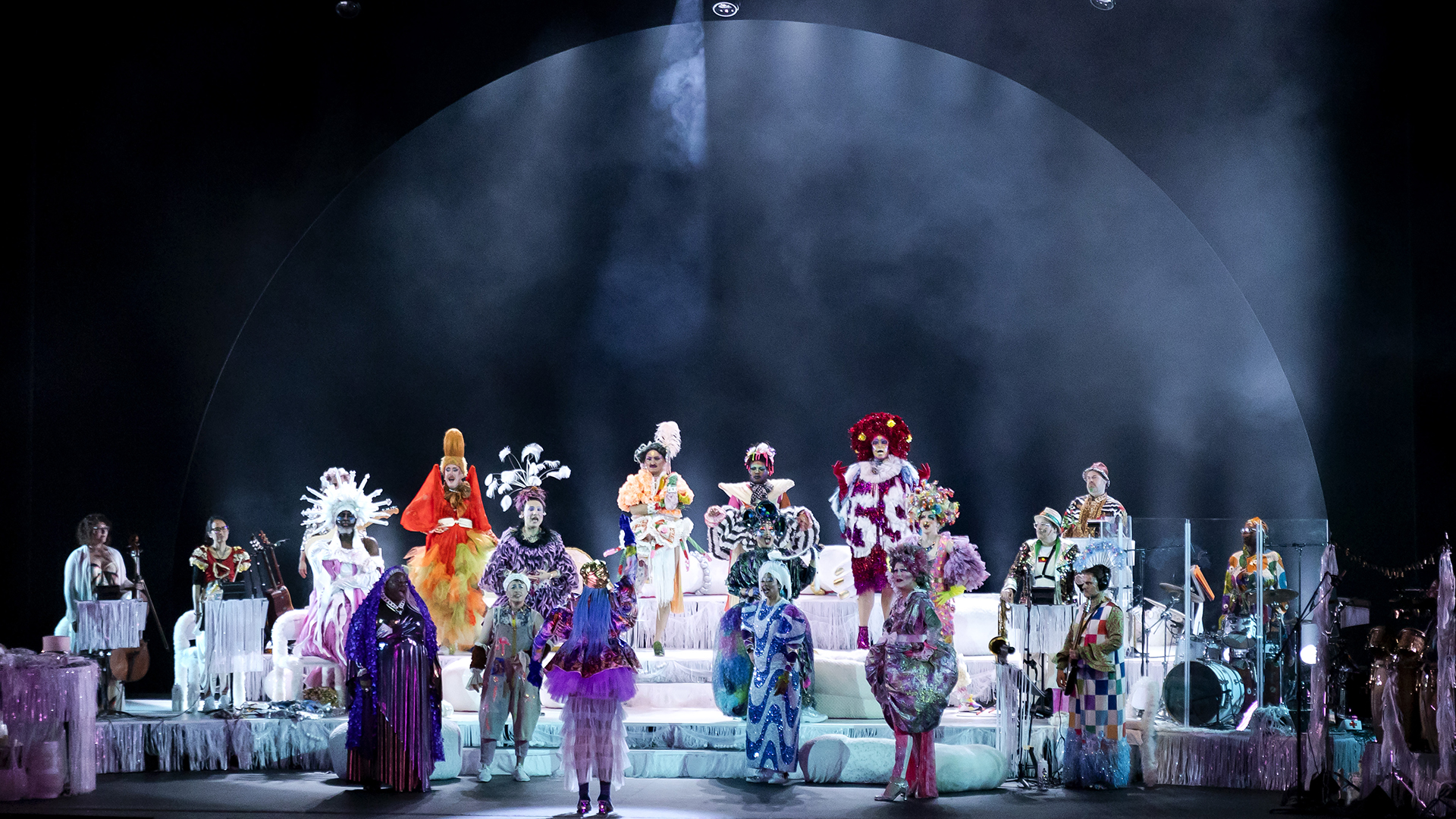Meet the designer behind the out-of-this-world costumes of ‘Bark of Millions’
"I'm not interested in beauty," said Machine Dazzle, costume designer for Bark of Millions, presented by Cal Performances last weekend. "I love the grotesque. I love difficult subject matter. I think that’s where the work is."
February 26, 2024
It began in 2019, when Taylor Mac and Machine Dazzle went to a disappointing pride parade in New York City.
They had high hopes for the parade — one that was meant to reclaim the free and fabulous spirit of the city’s parades in the ’80s and ’90s. And they dressed in costumes Dazzle designed for the occasion: Mac in a deconstructed sequined beret that covered his entire face, and Dazzle as a psychedelic Statue of Liberty with a huge rainbow American flag. But the parade felt hollow and corporate, and the pair snuck out early.
“We had a lot to think about,” said Dazzle.
They went to a nearby bar in the West Village, the Cowgirl Hall of Fame, where they drank and talked and drank some more.
And soon after, an idea started to take shape: Instead of going to pride parades made by other people, they would create their own. One that celebrates queer pioneers and life and raucous joy. One that everyone’s invited to.
And last weekend, from Feb. 23-25, they performed their own pride parade — Bark of Millions — at UC Berkeley’s Zellerbach Hall, presented by Cal Performances.
In the epic four-hour rock opera, written by Mac and musician Matt Ray, 22 ensemble members performed 55 original songs in the spirit of queer icons, from Marsha P. Johnson to Greta Garbo, each wearing extravagant costumes created by Dazzle. Every song marks a year since the first gay pride parade in 1970, plus one extra song for 1969, the year of the Stonewall riots that sparked the gay rights movement.
Bark of Millions comes seven years after the team performed the wildly popular Taylor Mac’s 24-Decade History of Popular Music.
Berkeley News talked with Dazzle about growing up queer in conservative America, how he became himself in New York City and why beauty doesn’t interest him.
Berkeley News: You were born Matthew Flowers in 1972 in Pennsylvania, spent your younger childhood in Texas, then moved to Idaho Falls, Idaho, as a teenager in the 1980s. What was like spending your teenage years in Idaho Falls at that time?
Machine Dazzle: They are what I call the dark years. Idaho Falls was such a weird place, it was so closed off. The city was 99% Mormon. It was one of the only cities outside of Salt Lake that had a Mormon temple in it.
Of course, going to middle school, they’re always the worst years for almost everyone, but particularly for queer people. I was different somehow, and everyone else knew. I was trying so hard to fit in, but there was just no way. I was just too different. I was gentle and nurturing and patient. Girls would always say, “He’s not like the other boys.”
I was really coming of age and realizing that I’m gay during the height of the AIDS crisis. Back then, AIDS and being gay were synonymous. It was the same thing: If you were gay, you certainly had AIDS. There was so much stigma around it. I remember when I kissed someone for the first time, I was like, “Oh, my God. I have AIDS.” I was petrified to even think about it or act on it at all. And I hate to say it, but for me, that stigma still continues to this day.
About a decade later, after you graduated from the University of Colorado, Boulder, with a degree in fine arts, you bought a one-way ticket to New York City, where you experienced a culture you never had before. How did the city’s nightlife scene in the ’90s change you and influence your interest in making art and costumes?
I’d never been to New York before I moved there. I had friends who graduated from CU who I moved with. I consider it the first decision I ever made for myself, and probably the best decision I’ve ever made for myself. I started acting on my own whims.
I was able to go to a place where there were a lot of gay people and be comfortable and happy about it and free of past stigma. I didn’t have to ask permission to be myself anymore. This was before the internet or cell phones — wherever you were was where you were. It was formative in the way I think and act and make things with my hands.
It was the height of the mega club. I would go out, and it was like a fantasy, all of these people moving freely in amazing outfits. And I started experimenting with costumes on my own body, doing all different kinds of weird drag. I wasn’t trying to be a woman; I was just trying to be fabulous. The kinds of things I could afford were not fabulous, so I had to make them. I made crazy things that fit my own natural body instead of trying to augment myself or be someone I wasn’t. I was just being an extreme version of myself.
People loved what I was making for myself and wanted me to make things for them. At first, it was individuals, then small groups, then I started doing shows — burlesque, opera, theater, cabaret, drag shows — and the shows got bigger and bigger.
When did you become Machine Dazzle?
When I’d go out, I loved dancing. I could dance for hours and hours. My friends called me the dancing machine, and over the years, it became just Machine.
In 1996, some friends of mine formed a group called the Dazzle Dancers. I made all the costumes, and after a while, I started performing with them. We all had Dazzle names. The leader was Cherry Dazzle. There was Chunky Cupcake Dazzle. Dazzle Dazzle. And I was Machine Dazzle. We covered our bodies in glitter and stripped off the costumes that I made. People went crazy, they loved it.
By the time the Dazzle Dancers left the building, I’d already been using the name professionally for years, so I kept it.
Around the time of the Dazzle Dancers, you met Taylor Mac, and the two of you started collaborating on projects together. Most recently, in 2016, you worked on Taylor Mac’s 24-Decade History of Popular Music, a queer reinterpretation of songs from each decade of American history performed in 24 hours. Mac has said that you and he have a similar take on things — that you both like to take something that’s not necessarily considered beautiful and make it into something beautiful.
I love regarding ugly things as beautiful. I am not interested in beauty. I think beauty is easy to achieve and even easier to understand. I like things that are a little more challenging. I love the grotesque. I love difficult subject matter. I think that’s where the work is.
I think society, in general, is beauty-obsessed and youth-obsessed in a very unhealthy way. I’m way more interested in the underdog — probably because I was the underdog growing up. I absolutely was. I am not interested in the status quo.
I like to live without labels. Putting a label on something is understanding it for that and possibly not any further than that. People have a way of putting things in categories and organizing it in their brains so they have a way of understanding it when, in fact, maybe you will never really understand it, or you haven’t gone far enough to understand it. And don’t forget that things evolve and change.
Since the worldwide success of 24 Decades, there’ve been hundreds of stories about you and Mac and the art you’ve created, together and separately. I’ve seen many publications describe your style as “queer maximalism,” among other terms. In Bark of Millions, do you feel like, in some ways, you’re pushing against a brand or label people have tried to put on you?
Yes, Bark of Millions is freeing ourselves from that. There was a song that’s not in the show anymore, but it’s about, like, look, don’t come in here expecting anything. Leave here with everything. Don’t come in here thinking that Taylor and Machine and Matt Ray have somehow branded themselves into this, like, queerness. We are who we are. You put the label on, if you want, but we’re inviting you to come in.
We are not going to do things according to what you think we are going to do. We are going to do what we want to do because we are happy doing so. And you are invited along for the ride, to partake in the parade and clap for our people, for our conceptual floats, and be with the music.
In this show, you are a designer, but you’re also an ensemble member. How has the experience been different for you from, say, 24 Decades?
In 24 Decades, I played myself, Machine Dazzle the costume designer, and I came out and changed Taylor every hour in front of everyone. In Bark of Millions, I sing with the group — most of the songs are group songs — but everybody also has solos. So I’m on stage for four hours. I can’t worry about the costumes. In 24 Decades, I was always changing something, adding something, working on it, even during the show. But I can’t do that this time. But, of course, I will always continue to add to them and change them
How do you hope people feel after the performance? What do you hope they take with them?
The show moves like a boat, like a barge. At the end, hopefully we’ve reached our destination, or we’re closer to it than ever, by way of music, storytelling, costume, pageantry.
It’s like a reverse conversion therapy session. If you’re not queer, you will be by the time you leave. If you’re already queer, you’re going to be even more queer by the time you leave. The show is very caring and nurturing. It’s like feeding the birds. It’s like watering a tree. It’s like feeding a baby. That’s what the show feels like.
